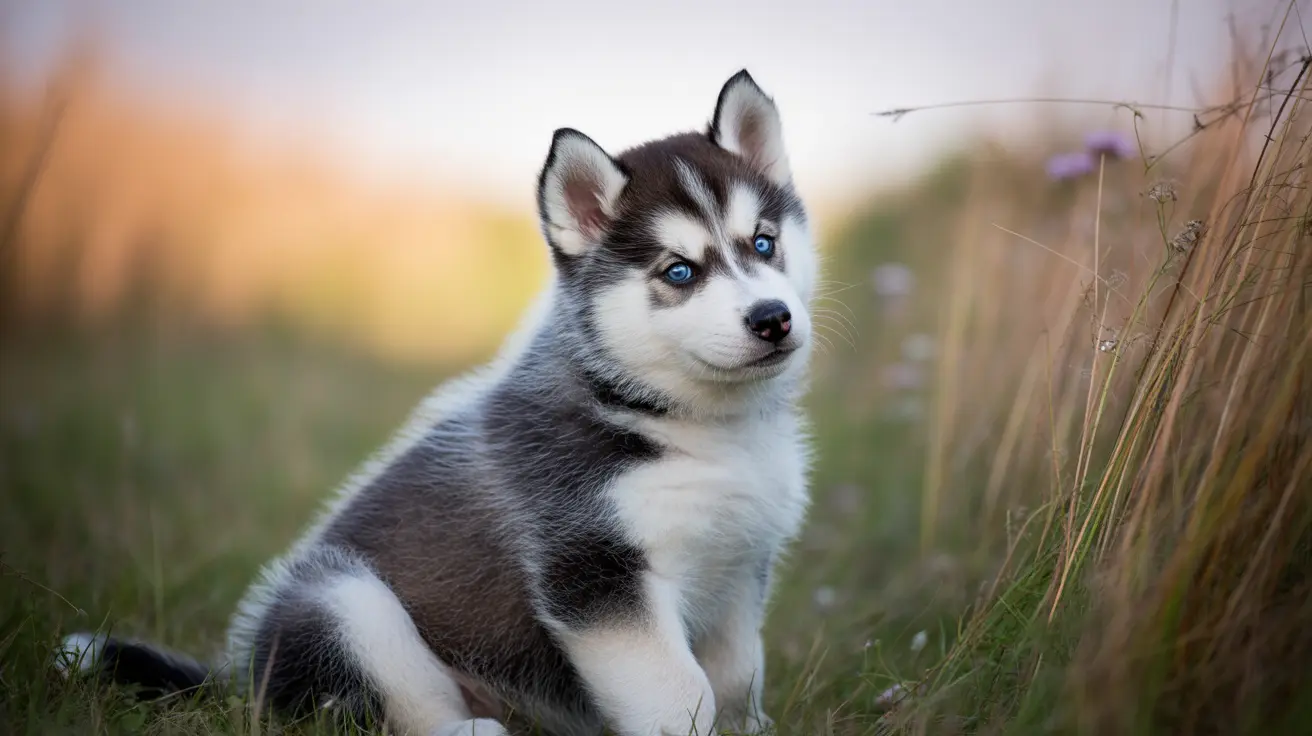The Natural Timeline of Puppy Eye Color Changes
Most puppies start life with blue or grayish eyes due to a lack of melanin in their irises. This initial color isn't permanent, and a predictable timeline of changes follows:
Early Weeks (0-3 weeks)
Newborn puppies keep their initial blue or grayish eye color. During this period, their eyes are still developing, having just opened around 10-14 days after birth.
First Color Changes (3-4 weeks)
The first hints of color change typically begin around 3-4 weeks of age. You might notice small flecks of their future adult color appearing in the iris as melanin production increases.
Active Transition Period (4-9 weeks)
During these weeks, the most dramatic color changes occur. The blue begins to fade as the permanent color gradually emerges, often progressing through various intermediate shades.
Factors Influencing Final Eye Color
Genetics and Breed
Your puppy's final eye color is primarily determined by genetics. Some breeds, like Siberian Huskies, are genetically programmed to keep their blue eyes, while others typically develop brown or amber eyes.
Melanin Production
The amount of melanin produced in your puppy's iris determines their final eye color. More melanin results in darker browns, while less creates lighter colors like amber or hazel.
Special Cases and Variations
Heterochromia
Some puppies develop different-colored eyes (heterochromia), which is common in breeds like Australian Shepherds and Siberian Huskies. This condition is typically harmless and genetically determined.
Persistent Blue Eyes
While most puppies' blue eyes change color, some breeds naturally retain their blue eyes into adulthood. This is particularly common in Arctic breeds and those carrying specific genetic variants.
When to Consult a Veterinarian
While eye color changes are normal during the first few months, certain signs warrant veterinary attention:
- Sudden color changes after 6 months of age
- Cloudiness or opacity in the eyes
- Signs of discomfort or irritation
- Uneven color development between eyes
Frequently Asked Questions
When do puppies' eyes typically start to change color from blue or gray?
Puppies' eyes typically begin changing color around 3-4 weeks of age, when melanin production in the iris increases.
How long does it take for a puppy's eye color to settle into its permanent adult shade?
Most puppies develop their permanent eye color between 9-16 weeks of age, though subtle changes can continue up to 6 months.
What factors influence the final eye color of a puppy as it grows?
The main factors are genetics, breed characteristics, and melanin production levels in the iris. Environmental factors play minimal role in determining final eye color.
Why do some dog breeds, like Siberian Huskies, keep blue eyes into adulthood?
Certain breeds retain blue eyes due to specific genetic variants, particularly in the ALX4 gene region, which affects melanin distribution in the iris.
When should I be concerned about changes in my dog's eye color after puppyhood?
Any eye color changes occurring after 6 months of age, especially if accompanied by cloudiness, discomfort, or other vision changes, should be evaluated by a veterinarian.
Conclusion
Understanding when puppies' eyes change color helps you track your pet's healthy development. While most puppies complete their eye color transformation by 16 weeks, each puppy follows their own genetic timeline. Remember to document these changes through photos and consult your veterinarian if you notice any concerning developments.






